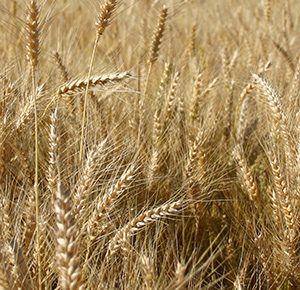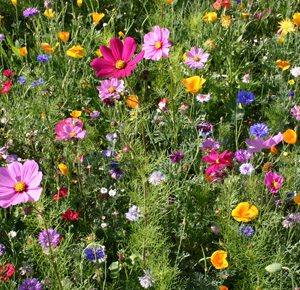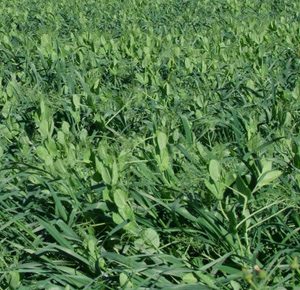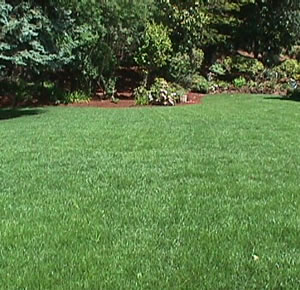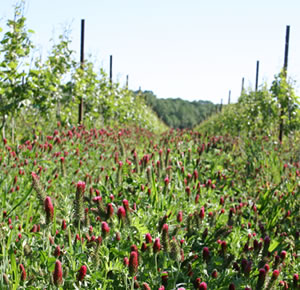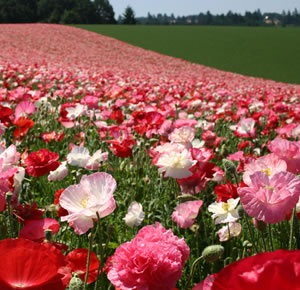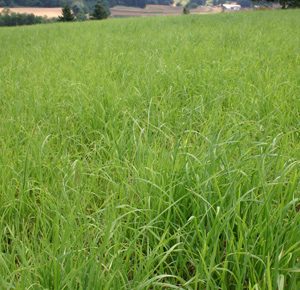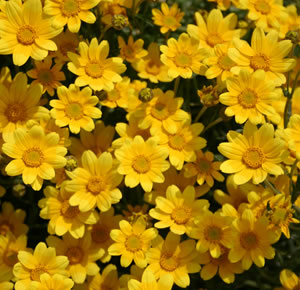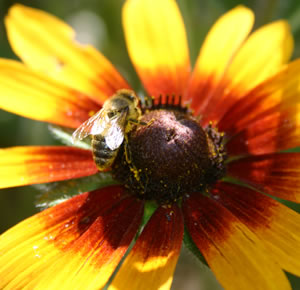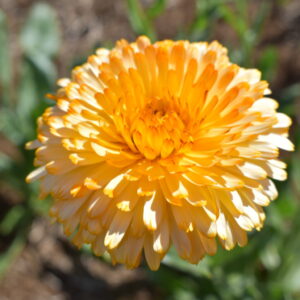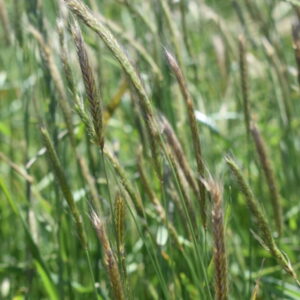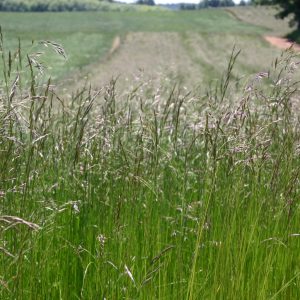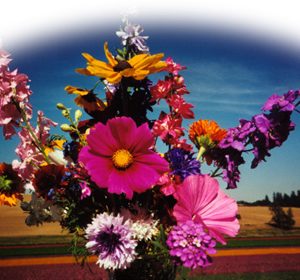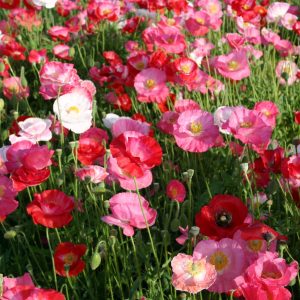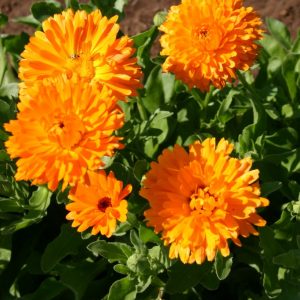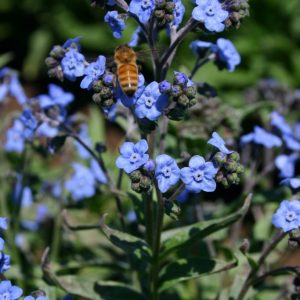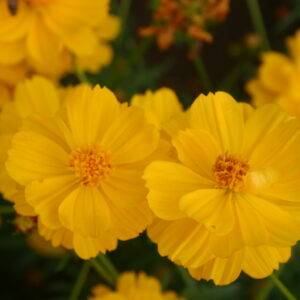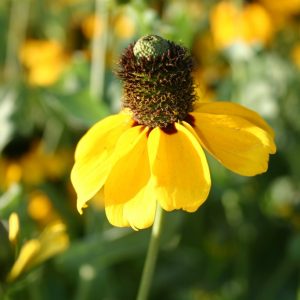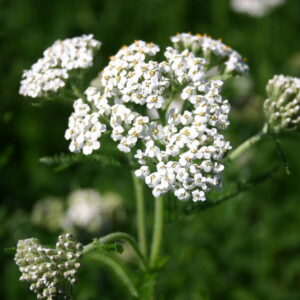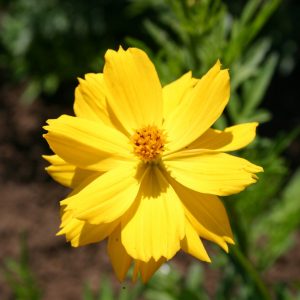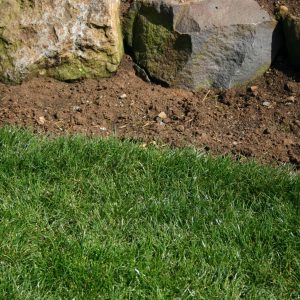If your lawn is already established and you want to replace it and do not need to level, we suggest the following:
Step 1 – Measure
Before you start, you need to measure the area that you are planning on planting so that you will know how much additives, fertilizer and seed you need. To determine the area in square feet (ft²) use this simple equation to calculate it: Length (ft) × Width (ft) = ft². Save your notes for this in a safe place for later use.
Step 2 – Test the Soil
It is best to get a soil test ahead of time so you know your soils’ needs. This should be done 1-2 months before you plan to plant your lawn. These tests take time to be completed, but this can give you time to gather the proper items that you will need for a successful planting. You can contact your local county extension office to find out where you can send these tests to be done. It is best to use the labs in your area for the best results. They need to be pulled from several locations in your lawn to be accurate. They should be pulled from the top 6-8″ of soil to be correct.
Step 3 – Weed Control
Below are 3 options for controlling weeds. We have found that using one of these options in the fall and actually waiting until early spring to replant your lawn gives the best results. You should do one of the following options below and then move on to Steps 4 and 5.
- This method should provide some excellent weed prevention when done properly on its own. Use peat moss, fine bark dust or potting soil at a depth of 2-4″ over the top of your soil without mixing it into the soil that is there. This will create a clean top layer to plant your seeds in and create a seal from your weedy top layer that you might have had. This option is more expensive, but can work with good results. The fine saw dust is the least expensive of the three. Peat moss costs more than the fine saw dust and potting soil is the most expensive top soil item.
- You could consider the use of an herbicide that will kill the weeds for you. This method can be very effective and can be done with less time and money, but you must be very careful and follow the directions on the label very carefully. If you choose to use an herbicide, spray the lawn with at least 3 days after regular mowing for best results. Wait the recommended time on the herbicide label and mow as short as possible. Remove the debris, you can save it as compost if you prefer. Then repeat process again with thatcher blade on mower, removing any excess debris. Straight apple vinegar will also control a lot of weeds.
- One of the safest and best ways to have effective weed control is to use sheets of clear plastic and cover the area you are working to kill and suffocate whatever is growing. This can be a little expensive and time consuming, but it will give you good control when done properly. The area needs to be covered completely for 6-8 weeks to kill some of those more established, harder to control grasses. After this time period has past, remove the plastic and move to Step 4. Unfortunately, this option does not work as well in the Northwest due to our cooler temperatures.
Step 4 – Work the Soil
When working the soil, be careful not to over work it if it is too wet. You could damage the soil by doing this and it takes a very long time to recover. A general rule of thumb is to pick up a handful of dirt and squeeze it in your hand, making a fist. Hold your hand straight out and drop the dirt on a firm surface. If it remains in a ball and does not break up, the ground needs to dry more before working. Loosen top 1″ of soil using a cutter or tiller. There is no reason to go deeper.
Step 5 – Rake and Fertilize
Rake and level removing heavier debris. You can use peat moss or sawdust on top of soil. (Make sure what you use is clean and does not have weed seeds in it.) Apply just enough to cover approx. 1/4″. Level out with leaf rake. If lime or gypsum is needed, this would be a good time to apply. If you can find a pellet or granular lime, that is a lot easier to apply. Try to spread as even as possible. The use of a fertilizer spreader to apply will give uniform coverage and to make a good planting medium. If you are waiting until spring to plant, stop here until then.
Step 6 – Weed Control, Part 2
If you have problems with weeds in your lawn this is a good time to get better control on them. If you have the patience after you thatch, level and add additives, then start watering area to be planted. You need to keep moist for approximately two weeks. Do not water too much; when soil shows moist in morning and drying in afternoon you need to water again. Do not water excessively allowing pooling; this will drown the new seedlings of grass. If you do not have water let the area to be planted sit idle for 2-3 weeks. This will give weeds close to the surface a chance to grow. If your temperatures have been in the mid 50’s to 60’s for 7 to 10 days a few times and your area to be planted shows no signs of weeds move on to step 7 about top coating and you will be ready to plant.
- With 3rd option, after two weeks have passed you can repeat step 3 of covering with clear plastic again, this will control the new weeds that you have brought to the growing surface. The plastic will need to remain in place for another 2-4 weeks depending on how good of weed control you want. The longer time period the better. This should be done during the growing season to get effective control and needs to remain sealed to get good control. This method is hard to do because of the patience that are needed but you will be rewarded greatly which a beautiful clean lawn that will last longer.
- If you decide not to use the plastic, try to rake the weeds lightly with a leaf rake or pull out with a hoe or by hand. Try not to disturb the soil any more than you have to as when you do you will increase your chances of having more weeds grow again.
If you use peat moss or sawdust you can apply them 1/2″ deep over the area to be planted. This will help seal some of the weeds under the soil or sawdust applied if you have not done so previously. This will also aid in starting the new seed that you are going to plant and give them a fine growing medium for starting in. Level and smooth with a leaf rake and you are now ready to plant.
Planting Grass
Now it is time to seed your lawn. Using a fertilizer spreader at the designed setting, seed your lawn one direction back and forth using 1/2 the seed you planned on using. Now seed your lawn opposite, or cross-ways, using the remaining 1/2 of the seed. If you have a little seed left over, save it for touch ups later. Now you are ready to water and let you lawn grow, unless you want to touch it up lightly with leaf rake or a roller to firm down. The seed needs to be very shallow, basically on top of the soil. Seeds should not be deeper than the length of the seed. If you see seed lying on top, that is ok. Remember that the rates we recommend are a minimum and performance can be increased by using higher rates.
Watering
You need to keep your soil moist for the next 2-3 weeks. Re-water when soil looks dry on top in mornings. Do not allow water to pool or it can make dead spots. It is best to water for short periods of time while establishing, keep moisture on the upper level of the soil where the seed is planted. After the seedlings emerge you can start to reduce your watering and let the soil start to dry a little more so the roots will grow deeper in the soil as the plants get more established.
New Lawns
For new lawns you need to get the soil leveled, smoothed out, and formed up to your preference. Make sure that you have good topsoil on top of poor clay or rocky subsoil to promote success. We would recommend watering your area the same as if it were planted for 2-3 weeks to get the weeds in the soil growing. Do not water excessively to create pooling. After this time let it dry off on top and decide which method works best for you above under ‘PLANNING AND PREPARING FOR RENOVATING A LAWN’. After you have done one of the methods above, you can top coat using less than 1/2″ peat moss or sawdust. Make sure this topcoat is clean of weed seeds. This will give you a good seed bed fairly free of weeds and is very easy to use.
Repairing Spots in Established Lawns
If you have a damaged spot in your lawn that you need to reestablish, here is a suggestion on what we have found as a successful method.
- Remove weeds or unwanted vegetation from the area you need to patch
- Scratch area that you are going to seed with a hoe or garden rake at a depth not exceeding much more than an inch, so that the roots can grow in the soil
- Use potting soil, peat moss or fine sawdust and spread approximately 1 inch deep over the area to be repaired; then rake and level. Do not mix with soil.
- Use one of the seed mixes and apply seed with our easy to use shaker container
- Keep moist until established (best when done in the spring or fall)
Fertilizing Your Lawn
We use fertilizer at lower rates and apply a small amount each time to avoid fertilizer being washed away. We recommend waiting until your lawn is up and growing before you fertilize (usually after the 1st or 2nd mowing). You need to follow the rates recommended on the fertilizer package that you use. What we have found successful, when growing an excellent lawn, is to feed a little less than the suggested amount and feed more often. When you apply an excessive amount all at once, there is a possibility of damaging or even killing your lawn. One of the easiest ways to avoid problems, and is much safer, is to use a slow release fertilizer. This will help your lawn stay greener, for longer, and it is environmentally safe.
Lawns are like people in some ways – you eat more often than once a week and so does your lawn. The soil is like a kitchen, it can hold only so much food, and needs to be replenished during the growing season. When you mow your lawn, you take away nutrients. The more you mow, the more you take away, and therefore need to replace.
Watering Established
As your lawn becomes established it will need to be watered according to the weather. The warmer and dryer weather conditions are, the more frequently you should water. Look around your lawn for dry looking spots. Some areas will dry out quicker, such as under trees or shallow soils. If you watch these dry areas they will guide you for how often you need to water. During the summer in the northwest, a good rule of thumb is to fill a tuna fish can with water every week to ten days. What this means is, put a tuna fish can under your sprinkler when you water and when it is almost full, that should be enough.
An established lawn likes a heavier soaking with drying in between to help prevent diseases. It is best to water in the early mornings if you can. This is the time that you will get the most out of your watering.
Lack of watering tends to make the grass look dry appearing and excess watering causes yellowing and tends to wash nutrients out of the soil. Excess watering will create more mowing and has a tendency to increase weed growth.
Mowing
The first time you mow, it is best to let the grass become well established. You normally cut most of the grasses around 1½” to 2″ height. It is best to mow the lawn on a regular schedule according to growth. Normally you should cut 1/3 of the plant height. So when the grass is 3″, cut it back to 2″. Letting grass grow to excessive heights and cutting them back short is hard on the plants and tends to shorten the life of the plants, causes unwanted stress and also poor color.
Cultural Practices
- Keep the blades on the mower sharp to prevent bruising the cut edge of the leaves.
- Keep lawn fertilized to keep it healthier, disease-free and the “Dark Green” color. Lack of nutrients can cause an increased chance of disease. We recommend a smaller amount of fertilizer at any time of application.
- Mowing at closer intervals let you mulch clippings back into lawn. This is a healthy practice as long as it is done frequently; otherwise you should remove clippings and compost them.
- Do not water excessively or it will cause the nutrients to wash out, more frequent mowing and disease.
- Water good soaking approximately 1″, or a full tuna fish can, a week to enhance deeper rooting and a more drought tolerant lawn.
- Proper planting times are April, May and September through October in the Northwest.
Weeds
Weeds in an established lawn can sometimes be difficult to control, but if your lawn is cared for properly, a lot of weeds will be controlled by the grass, as it will smother them out.
Broad leaves can be controlled with a weed and feed fertilizer at the recommended rates on the container, or you can use a hoe to pull out the weeds if you choose not to use herbicides. Grass weeds are much more difficult to control than broad-leaves. The procedure we recommend for planting, eliminating weeds from the top growing area, is a very good start to controlling a lot of these weeds. However, there are always some weeds in the ground that have hard seeds or are just dormant and escape controls. If you have problems with other grasses, you can either spot spray or hoe out the unwanted plants.
Pests and Disease
There are times when even the healthiest lawns are attacked by pests and diseases due to weather, soil and other conditions. If you have a particular problem send us an e-mail and we will try to help your recognize the problem.
We have found in recent years of field production, for example, that we have had a substantial increase in earthworm population in our soils. Because of the increase in worms, we now have a problem with moles that come to eat the worms and make holes all over the lawn. This is a sign of a healthy lawn but it does create a pesky pest problem that can be controlled. Slugs are another problem in the northwest; they have an appetite for grass. We have found over the years that our soils are healthier due to less chemicals being used and better crop rotations that help bring you better products
For Overseeding a Lawn For Cool Season Grasses
- For best results, mow your lawn as close as possible to the ground or use a vertical-cut machine. Rake and remove the debris. The debris removed would make excellent compost.
- You can rent a thatcher or get a thatcher blade for your lawn mower. You need to loosen a thin layer of soil, so the seeds can root in.
- Now you are ready to overseed your lawn. You should apply seed using 2-3 times more than the recommended new lawn seeding rate. Seeding half of the seed in one direction (back and forth) and the remaining half in the opposite direction from that. You can use a broadcast or fertilizer spreader to ensure a more uniform coverage.
This project should be done when your lawn’s growth slows; otherwise the existing grass will smother-out the seed you just planted. This is normally done in October and November in most areas. In the Pacific Northwest, the end of March through May would be a good time to overseed your lawn to improve its quality.
Dethatching
Dethatching a lawn is necessary when you have excess debris built-up that prevents your lawn from growing properly by not allowing nutrients to penetrate through to the soil. In extreme cases your lawn will almost die-out from the thick mats of dead roots, clippings and debris. You need to thatch and remove this debris. The best time to do this is in the fall or spring, when plants are slowing in growth. This will also improve the health of your lawn.
Aerating
In some areas you tend to have high traffic and this will tend to compact soils, which prevents water and nutrients from reaching the roots. Old lawns have more problems with this because the old root mass is built-up throughout the lawn. If you are replacing with a new lawn or OVERSEEDING, you can ensure the success of your lawn by aerating prior to replanting. You can rent these machines, if needed, from a local equipment rental store.
Debris
You need to make sure not to leave debris that covers the top blades of grass in your lawn. Whether it is leaves, needles, grass clippings or other debris; if left lying thick enough it will block sunlight from reaching the plants and will damage or kill spots in your lawn.
Shade
If you have shady areas, such as under trees, you might need to get a different mix to seed those areas to achieve a successful lawn. Trees and lawns tend to fight for moisture and nutrients. Depending on the size and type of tree, those areas might need a little extra care to stay in top shape.
Common Failures
Soil is not prepared properly
- Inadequate moisture
- Excessive moisture (pooling)
- Improper timing
- Adverse weather
- Impatience
- Poor soils
- Lawn Mixes
A last word
In some regions, such as the Pacific Northwest, to keep a top-notch, premium lawn you will need to overseed or kill-out and start over every 3-5 years (depending on how well you maintain your lawn). However, some lawns will last longer than 3-5 years. In the southern climates, the lawn will need to be overseeded every year.
Timing on seeding lawns and controlling weeds is important. The growths of these two items are controlled by temperature. The debris, such as clippings, leaves and roots from these projects work really well for composting and can make an excellent amendment to your soil.
The lawn mixes/blends we have put together for you were designed to get you the optimum qualities for these grasses for lawn/turf use. Some of your growing needs are different for different applications and growing areas. Our goal is to provide you a blend of seeds that will cover your needs with good quality seed that is developed for turf. This is achieved through using different varieties of grass seed. We use these blends to achieve quality and adaptation for your area (not to get rid of poor quality seed). We hope the information provided on this page assists you with your path to a perfect yard. Remember, if you have questions, just drop us a note.

